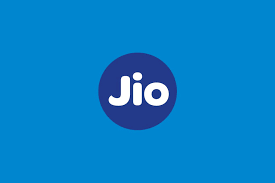
Jio Case Study: How Jio Disrupted the Indian Telecom Market
Jio, a mobile network operator in India, has been the talk of the town since it launched in 2016. Jio’s entry into the market disrupted the telecom industry with its disruptive pricing strategy and focus on building a strong 4G network. In this article, we will take a closer look at Jio’s success and its impact on the Indian market.
Jio’s Entry into the Indian Telecom Market
Before Jio’s entry, the Indian telecom market was dominated by a few established players, such as Airtel, Vodafone-Idea, and Reliance Communications. The market was marked by high prices and poor quality of service. Jio disrupted the market by offering free voice calls and low-cost data plans. This triggered a price war among existing telecom operators and led to consolidation in the industry. Many small operators were forced to shut down, while larger players like Airtel and Vodafone-Idea were forced to merge in order to compete with Jio.
Jio’s Disruptive Pricing Strategy
One of the key factors behind Jio’s success was its disruptive pricing strategy. Jio offered data plans at a fraction of the cost charged by other telecom operators. This was made possible by Jio’s focus on building a strong 4G network, which allowed it to offer high-speed internet at low prices. Jio’s voice calls were also free, which was a first for the Indian market. This pricing strategy attracted millions of new customers to Jio, driving its rapid growth.
Jio’s Focus on Building a Strong 4G Network
Jio’s focus on building a strong 4G network was also a key factor in its success. Jio invested heavily in building a state-of-the-art 4G network, which covered most of India in a short period of time. This allowed Jio to offer high-speed internet at low prices, which was a major draw for customers. Jio’s strong 4G network also enabled it to offer innovative digital services, such as video streaming and online gaming.
Jio’s Use of Digital Channels
Jio also used digital channels to acquire and retain customers. Jio’s mobile app allowed customers to manage their accounts, make payments, and access Jio’s digital services. Jio also used social media and other digital channels to market its services and attract new customers. Jio’s use of digital channels gave it an edge over other players in the market, who were slower to adopt digital technologies.
Jio’s Partnerships with International Companies
Jio’s success in India has also attracted international attention. Companies like Facebook and Google have invested in Jio, seeing it as a potential partner for their expansion into the Indian market. Jio’s partnerships with these companies could be a game-changer for the Indian market, enabling Jio to offer innovative new services and technologies.
Jio’s Future Plans
Jio has ambitious plans for the future, including its entry into the 5G market and its foray into the e-commerce and digital payments space. Jio’s entry into these new markets could further disrupt the Indian market, offering new opportunities for growth and innovation.
Challenges for Jio
Despite its success, Jio faces several challenges in the future. Increased competition from other players, regulatory hurdles, and changing consumer preferences are all potential challenges that Jio will need to overcome in order to maintain its growth and market position.
Conclusion
Jio’s entry into the Indian telecom market has been a game-changer, disrupting the industry and offering new opportunities for growth and innovation. Jio’s success can be attributed to its disruptive pricing strategy, focus on building a strong
Leave a Reply